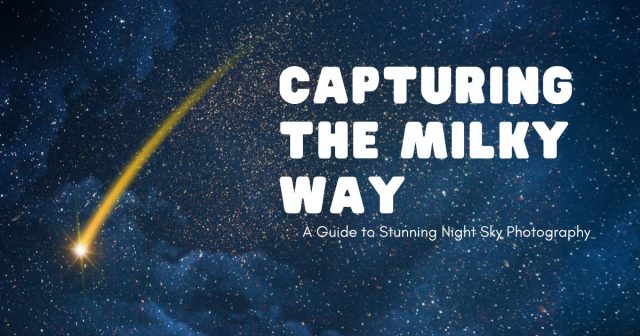There’s something magical about stepping outside after dark, far from city lights, and witnessing a sky ablaze with stars. For photographers and dreamers alike, chasing perfect views of the Milky Way is the ultimate adventure. In this guide, we explore eight of the world’s premier dark-sky destinations—places so remote and protected you can see our galaxy in all its glory. Whether you’re a seasoned astrophotographer or simply want to experience celestial wonders firsthand, these locations promise unforgettable nights beneath the stars.
What Is a Dark-Sky Reserve?
A Dark-Sky Reserve is an area recognized by the International Dark-Sky Association (IDA) for its exceptional quality of starry nights and nocturnal environment. These sites implement strict lighting controls to preserve darkness and support wildlife. Visiting a certified reserve guarantees minimal light pollution, ideal conditions for stargazing, and opportunities to learn about astronomy from local experts.
How to Prepare for Your Astrophotography Journey
- Check the Moon Phase: Aim for a new moon or crescent phase to reduce natural light interference.
- Scout Your Location: Arrive early to find the perfect foreground elements and set up your gear.
- Use a Fast Lens: A wide-angle lens with an aperture of f/2.8 or wider captures more light.
- Manual Settings: Shoot in manual mode: ISO 1600–3200, shutter speed 15–25 seconds, aperture wide open.
- Bring a Red Flashlight: Preserve your night vision while adjusting settings and reading maps.

1. Atacama Desert, Chile
The Atacama Desert is often called the driest place on Earth—and its sparse clouds and high altitude create crystal-clear skies year-round. Located near the ALMA Observatory, this region draws professional astronomers and hobbyists alike. Lodges like Alto Atacama offer guided stargazing tours with telescopes, while nearby valleys provide dramatic foregrounds for Milky Way shots. Don’t miss Valle de la Luna at dusk for surreal desert landscapes that glow under starlight.
2. Aoraki Mackenzie, New Zealand
New Zealand’s first Dark-Sky Reserve, Aoraki Mackenzie, spans over 4,300 square kilometers of rural farmland and alpine terrain. In winter months, snow-covered peaks reflect starlight beautifully, while summer skies reveal the Magellanic Clouds—satellite galaxies visible only from the Southern Hemisphere. Local operators offer night-vision tours and astrophotography workshops, making it a must-visit for both amateurs and pros.

3. Jasper National Park, Canada
Jasper National Park was designated Canada’s first Dark-Sky Preserve in 2011. With minimal artificial lighting and a well-organized Astrofest each October, this UNESCO World Heritage site is perfect for capturing the Milky Way over glacier-capped mountains and pristine lakes. Pyramid Lake and Maligne Canyon are popular spots—arrive early to secure a viewpoint and watch the sky transform after sunset.

4. NamibRand Nature Reserve, Namibia
Bordering the famous Sossusvlei dunes, NamibRand Nature Reserve is one of Africa’s darkest places. Vast red sands stretch toward the horizon, creating an otherworldly foreground. Luxury lodges provide night drives with astronomers, laser pointers, and panoramic sky platforms. The Southern Hemisphere’s center of the Milky Way bulge rises high overhead, yielding spectacular long-exposure photos.
5. La Palma, Canary Islands, Spain
Known as “La Isla Bonita,” La Palma boasts some of Europe’s clearest skies. The Roque de los Muchachos Observatory perches above a sea of clouds at 2,400 meters, offering unobstructed views of the cosmos. The island enforces strict outdoor lighting controls, ensuring negligible light pollution. Beach camping on black volcanic sand under a star-strewn sky is an unforgettable experience.
6. Tre Cime di Lavaredo, Italy
The Dolomites’ jagged peaks frame this UNESCO World Heritage site, creating dramatic silhouettes against radiant stars. Tre Cime di Lavaredo is accessible via a scenic hike, culminating at Rifugio Auronzo, where you can photograph the Milky Way rising above the rugged summits. Alpine air and high elevation yield crisp, clear conditions for night-time exposures.
7. Death Valley National Park, USA
As one of the darkest places in the contiguous United States, Death Valley offers unparalleled star-filled skies. Mesquite Flat Sand Dunes and Zabriskie Point are popular photo sites, with endless horizons and stark desert topography. Summer nights can be hot, so plan for late-spring or early-fall visits. Park rangers often host astronomy programs at Furnace Creek.
8. Uluru-Kata Tjuta, Australia
Under the vast Outback sky, the red monolith of Uluru and the domes of Kata Tjuta take on a surreal glow under the Milky Way. Tours led by Indigenous guides offer storytelling and cultural insights as you photograph the galaxy overhead. Winter months bring cooler nights ideal for multi-hour exposures that reveal the Southern Cross and Pointers with stunning clarity.
Essential Packing List for Dark-Sky Adventures
- Sturdy tripod and fast, wide-angle lens
- Extra camera batteries and memory cards
- Warm, layered clothing (even in deserts)
- Red-filter headlamp or flashlight
- Portable star-chart app or printed sky map
- Snacks, water, and camping gear (if applicable)
Responsible Stargazing Practices
When visiting dark-sky areas, always respect local regulations. Keep noise and light to a minimum, avoid shining lights upward, and follow designated trails. Dispose of waste properly and minimize your environmental impact to help preserve these pristine night skies for future generations.
Conclusion
Chasing the Milky Way across the globe is a journey of wonder, patience, and creativity. From desert plains to alpine peaks, each dark-sky destination offers a unique canvas for your astrophotography dreams. Pack your gear, plan your timing, and prepare for nights filled with celestial spectacle. These eight locations are just the beginning—there’s a universe of starlit escapes waiting to be discovered.











